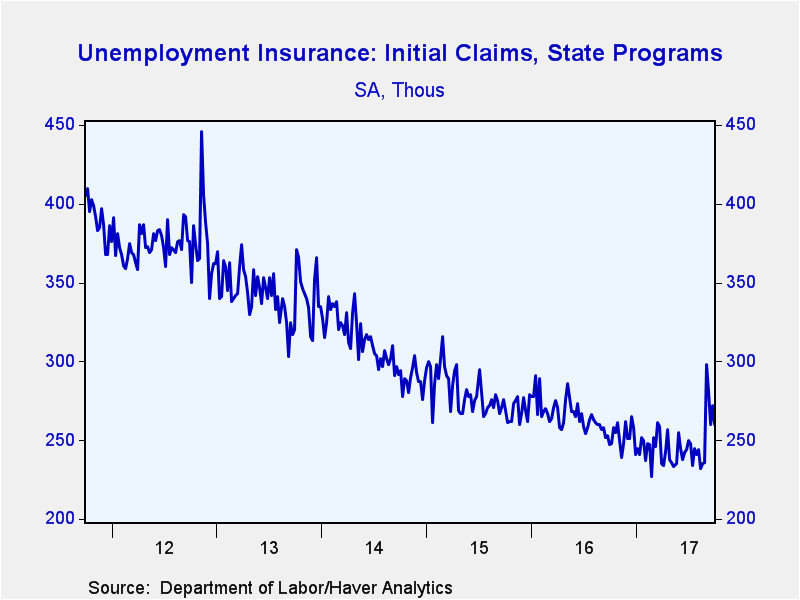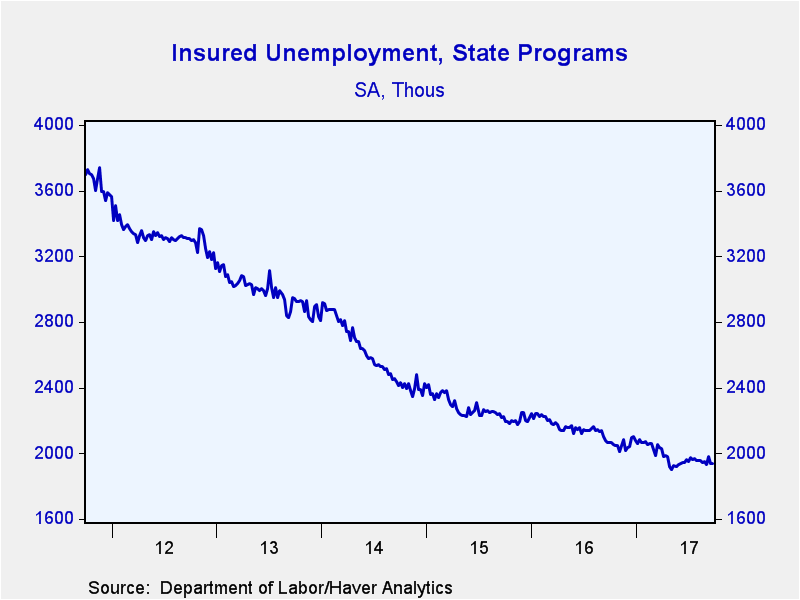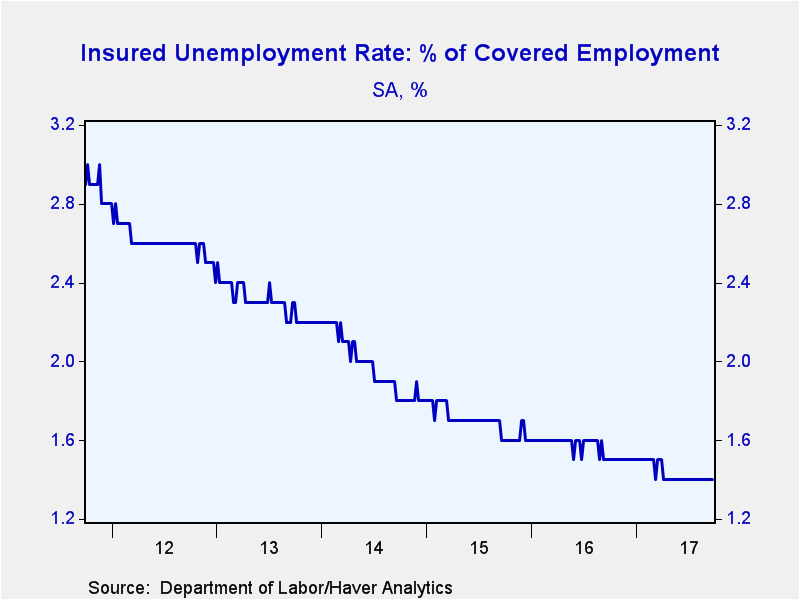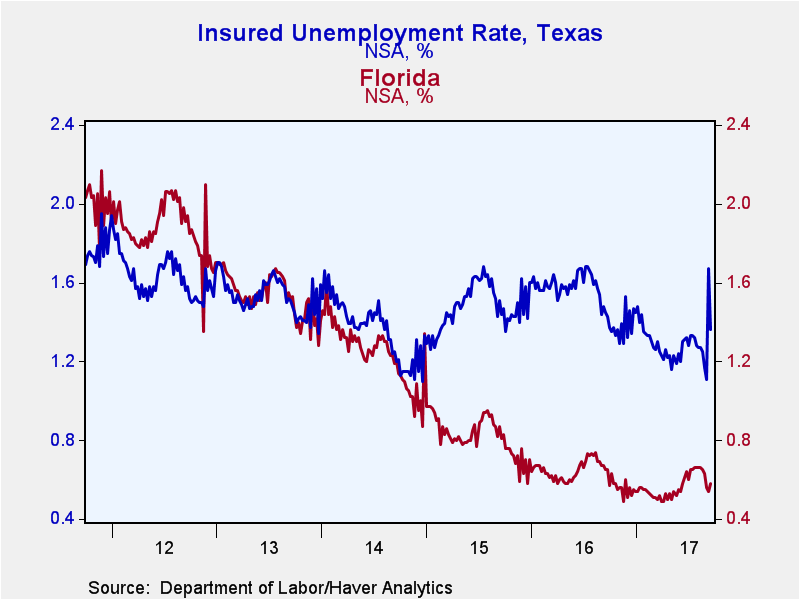 Global| Oct 05 2017
Global| Oct 05 2017U.S. Initial Unemployment Insurance Claims Decline
by:Tom Moeller
|in:Economy in Brief
Summary
Initial claims for unemployment insurance fell to 260,000 (+3.1% y/y) during the week ended September 30 from an unrevised 272,000 in the prior week. Expectations had been for 265,000 initial claims in the Action Economics Forecast [...]
Initial claims for unemployment insurance fell to 260,000 (+3.1% y/y) during the week ended September 30 from an unrevised 272,000 in the prior week. Expectations had been for 265,000 initial claims in the Action Economics Forecast Survey. The four-week moving average declined to 268,250.
Continuing claims for unemployment insurance rose to 1.938 million (-6.1% y/y) in the week ended September 23, after falling to 1.936 million the week before. The four-week moving average of claimants fell to 1.947 million.
The insured unemployment rate remained at the record low of 1.4%.
Insured rates of unemployment varied widely across the country. For the week ended September 16, the insured rate of unemployment in Texas declined to 1.36% and reversed half of the prior week's increase. The lowest insured rates of unemployment were in South Dakota (0.23%), Nebraska (0.43%), Indiana (0.46%), North Carolina (0.49%), Utah (0.50%) and Florida (0.58%). The highest rates were found in Massachusetts (1.55%), Pennsylvania (1.68%), Connecticut (1.84%), California (1.88%), New Jersey (2.07%) and Alaska (2.08%). These state data are not seasonally adjusted.
Data on weekly unemployment insurance are contained in Haver's WEEKLY database and they are summarized monthly in USECON. Data for individual states are in REGIONW. The expectations figure is from the Action Economics Forecast Survey, carried in the AS1REPNA database.
| Unemployment Insurance (SA, 000s) | 09/30/17 | 09/23/17 | 09/16/17 | Y/Y % | 2016 | 2015 | 2014 |
|---|---|---|---|---|---|---|---|
| Initial Claims | 260 | 272 | 260 | 3.1 | 263 | 278 | 308 |
| Continuing Claims | -- | 1,938 | 1,936 | -6.1 | 2,136 | 2,267 | 2,599 |
| Insured Unemployment Rate (%) | -- | 1.4 | 1.4 |
1.5 |
1.6 | 1.7 | 2.0 |
Tom Moeller
AuthorMore in Author Profile »Prior to joining Haver Analytics in 2000, Mr. Moeller worked as the Economist at Chancellor Capital Management from 1985 to 1999. There, he developed comprehensive economic forecasts and interpreted economic data for equity and fixed income portfolio managers. Also at Chancellor, Mr. Moeller worked as an equity analyst and was responsible for researching and rating companies in the economically sensitive automobile and housing industries for investment in Chancellor’s equity portfolio. Prior to joining Chancellor, Mr. Moeller was an Economist at Citibank from 1979 to 1984. He also analyzed pricing behavior in the metals industry for the Council on Wage and Price Stability in Washington, D.C. In 1999, Mr. Moeller received the award for most accurate forecast from the Forecasters' Club of New York. From 1990 to 1992 he was President of the New York Association for Business Economists. Mr. Moeller earned an M.B.A. in Finance from Fordham University, where he graduated in 1987. He holds a Bachelor of Arts in Economics from George Washington University.










